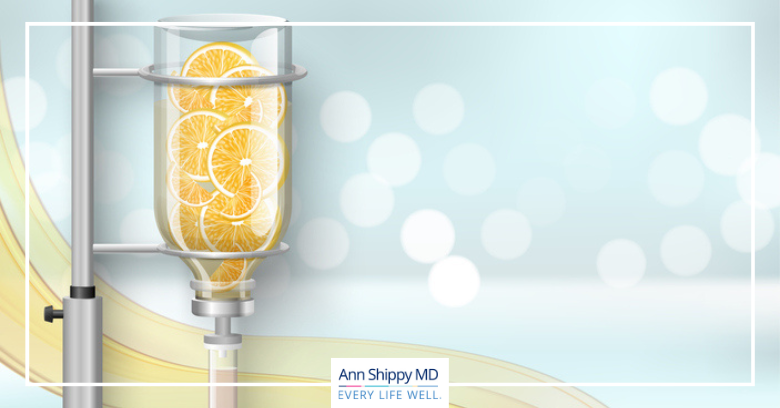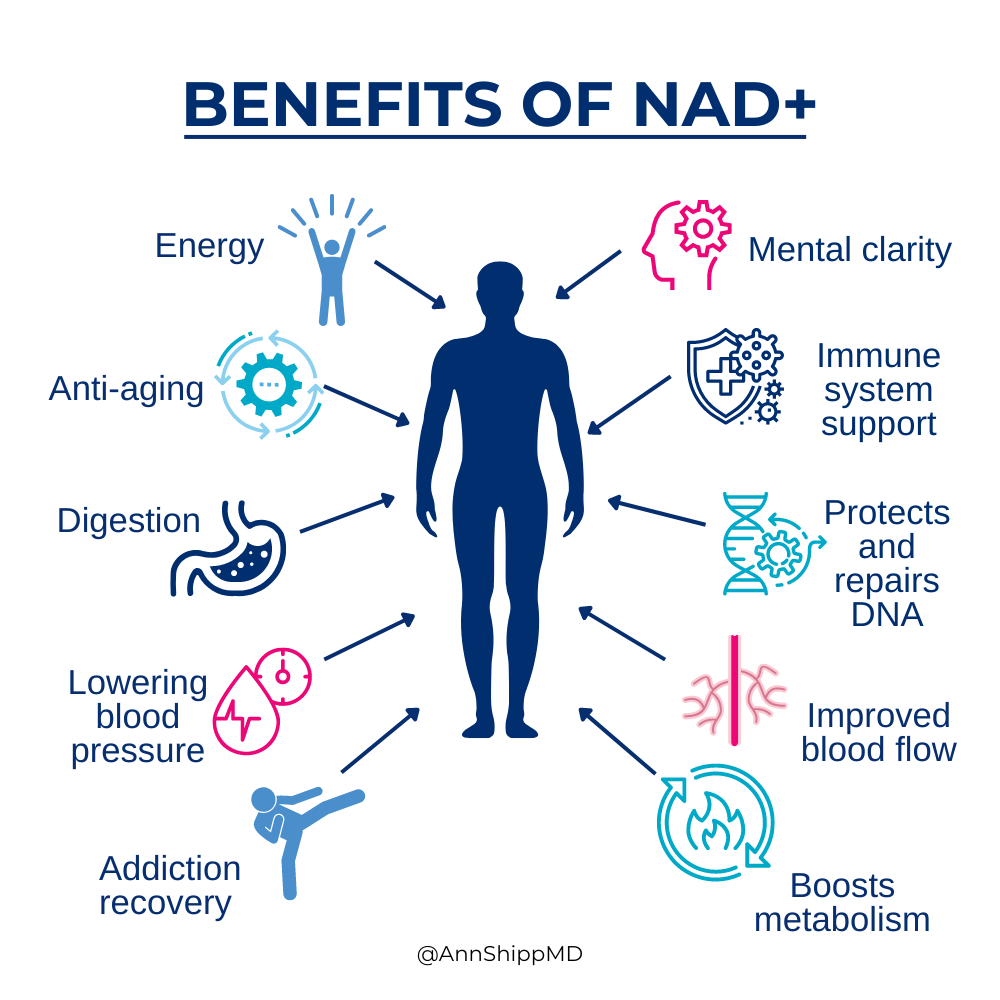History and Benefits of IV Therapies
Advertised as either a quick recovery from hangovers, anti-aging, energy boost, immune support or other, IV (intravenous) therapy has become more popular than ever in the last few years.
Whether it is offered by a mobile IV nurse, a specialty clinic or in a doctor’s office, IV services seem to be everywhere, attracting everyone from the health conscious, to the bachelor party goers, to the individuals who are dealing with or recovering from illness.
Why has there been such an explosion in popularity recently?
Well, a number of factors contributed, including science and even social media influence.
But the method of using intravenous delivery for therapy has actually been around for hundreds of years…dating back to as early as the 1600s.
IV technology was first published in 1883 by Dr. Thomas Latta during an outbreak of cholera in Britain.
And standard use of saline IV began in 1902, and IV nutrition therapy, or Total Parenteral Nutrition (TPN) become widely used in hospital patients in the 1960s after surgeons and researchers at the University of Pennsylvania began testing TPN on adult patients who were malnourished from a variety of surgical complications and gastrointestinal conditions.
TPN solutions were developed to provide the nourishment needed for survival and for patients who cannot eat on their own.
Today, the IV formulations that are given by mobile services, in outpatient settings and in clinics are used as nutritional supplementation for general wellness and as supportive treatments for a variety of conditions.
Myers IV Cocktail
One of the most popular IV treatments today is the Myers IV Cocktail. Developed by John Myers, an internal medicine doctor with Johns Hopkins.
Dr. Myers recognized the relationships between biochemistry, nutritional elements, and how they support cellular and metabolic function.
While at Johns Hopkins he experimented with different combinations of vitamins and minerals to treat a variety of chronically ill and challenging patients.
Dr. Myers saw and recorded how these IV micronutrients had positive outcomes on various medical conditions including fatigue, migraines, the common cold, chronic sinusitis, seasonal allergies, fibromyalgia, depression and anxiety.
Unfortunately his discoveries were not widely known and it wasn’t until the early 2000s when a physician named Alan Gaby shared information about Dr. Myers Cocktail in his book, Nutritional Medicine, that popularity started to take off.
Myers IV Cocktail Includes:
- Magnesium
- Calcium
- Vitamin B1
- Vitamin B2
- Vitamin B3
- Vitamin B5
- Vitamin B6
- Vitamin B12
- Vitamin C
- Sterile water
It’s essentially a B complex with electrolytes and vitamin C. The IV solution appears yellow because of the riboflavin, vitamin B2.
Over the past several years, the Myers cocktail has become widely known for its immune boosting properties – as both a preventative and therapeutic treatment.
Myers IV Cocktail Uses and Benefits
The Myers IV Cocktail may be supportive for the following conditions:
- Allergies (seasonal)
- Anxiety
- Asthma
- Athletic performance
- Immune system boost
- Cardiovascular disease
- Chronic sinusitis
- Common cold
- Depression
- Fatigue
- Inflammation
- Fibromyalgia
- General wellness
- Migraines
- Muscle pain/spasms
- Nutrient deficiencies
- Post Covid or Long-Hauler Syndrome
Many clinics also include glutathione to the Myers IV for added antioxidant benefits.
NAD+ IV
Nicotinamide adenine dinucleotide (NAD+) was first discovered in 1906 by Sir Arthur Harden while researching alcohol fermentation. Later studies found that NAD+ one of the most important molecules in the body, and is required for over 500 enzymatic reactions
NAD+ is the active cofactor form of vitamin B3 (niacin). What does this mean?
It means the niacin naturally present in foods, or as taken as a dietary supplement, is absorbed and then converted into NAD, the form that catalyzes or activates reactions in the body.
Primarily, NAD is involved in reactions that transfer the potential energy from the food we eat, (carbohydrates, fats, and proteins) into adenosine triphosphate (ATP), the cell’s primary energy currency.
NAD is also required for the enzymes involved in critical cellular functions, including the maintenance of genome integrity, control of gene expression (epigenetics), and cellular communication.
Most people start with an ample amount of NAD+ but levels decline as we age. And when NAD+ is depleted it causes a condition called “mitochondrial dysfunction”. Mitochondrial dysfunction is linked to aging, as well as virtually all chronic diseases’.
Improving or replenishing NAD levels may support mitochondrial function to support longer and healthier lives
One of the first therapeutic uses of NAD+ IV was for addiction and substance abuse recovery – as pioneered by therapist Paula Norris Mestayer, M.Ed., LPC, FAPA.
During her use of NAD as a therapeutic for addiction, she discovered that NAD+ infusions were found to be helpful with depression, anxiety, mood disorders and neurodegenerative diseases.
It was Paula Mestayer’s work that helped inspire and pave the road to the many therapeutic effects of NAD+.
NAD IV Benefits
Since NAD+ impacts DNA repair, epigenetic modifications, inflammation, circadian rhythm and stress resistance, replenishing NAD levels may restore levels and provide protective benefits.
A number of clinical studies show the numerous advantages of NAD therapy (see references).
BENEFITS OF NAD+ IV THERAPY:
- Anti-aging
- Boosts energy
- Supports mental clarity
- Digestion support
- Immune system support
- Improved blood flow
- Helps lower blood pressure
- Helps with addiction recovery
- Protects and helps repair DNA
- Boosts metabolism
Animal studies showed that interventions that increase NAD+ levels produce numerous benefits on the overall cardiometabolic health and immune function. Another study in old or diseased animals showed that restoring NAD+ levels can promote health and extend lifespan, prompting a search for safe and efficacious NAD-boosting molecules.
NAD+ also combats free radicals and oxidative stress that can lead to disease. Free radical production has been linked to exposures to environmental pollutants, heavy metals, certain medications, chemicals from foods or solvents, cooking (smoked meat, used oil, and fat), cigarette smoke, alcohol, and radiation.
When these toxic compounds enter the body, they are degraded or metabolized, and free radicals are generated as by-products.
Symptoms and conditions that may improve with NAD IV therapy:
- Alcohol and Drug
- Addiction
- Alzheimer’s
- Anxiety
- ADD/ADHD
- Chronic Fatigue
- Depression
- Diabetes
- Headaches
- Joint pain and stiffness
- Metabolic disorders
- Parkinson’s disease
- Sleep issues
- Immune system support
Phosphatidylcholine (PC) IV
Phosphatidylcholine (PC for short) is a naturally-occurring, essential nutrient necessary for the formation, structure and function of cell membranes throughout the body. PC is part of a group of compounds called phospholipids.
In 1847 Theodore Nicolas Gobley, a French chemist, isolated and determined phosphatidylcholine’s chemical structure from egg yolk.
Many years later, in the mid 1900s, scientists found that PC was actually one of the most important molecules that comprise a cell. It acts as a supplier of choline, which is necessary to maintain cell membrane integrity and to facilitate the movement of fats in and out of cells.
PC levels in cell membranes decline as we age. Having adequate PC in the body is so important for cell membranes to be healthy and for mitochondrial membranes to be healthy.
We get some PC from plant and animal cells, in fact meats are its most abundant dietary sources.
Other sources include egg yolks, sunflower seeds and soybeans.
But beware of conventionally farmed soybeans – they are one of the largest users of the weed killer glyphosate (Roundup), a toxin linked that is strongly linked to cancer.
IV PC is used to help reverse the deterioration of cell membranes and restore healthy cells. Healthy cells support healthy tissues, healthy organs – and ultimately support healthy bodies and minds.
Phosphatidylcholine is also important for liver health, a main site of detoxification in the body and the choline component supports methylation, which is also required for effective liver detoxification of a variety of chemicals.
A recent animal study found that phosphatidylcholine administration increases levels of the neurotransmitter acetylcholine in the brain, thus improving memory and reversing dementia.
PC IV therapy helps to restore the appropriate balance of lipids in cell membranes to maintain…
- Brain function
- Liver function
- Healthy cholesterol levels already within the normal range
- Gastric mucosal protection
- Healthy aging
PC IV therapy is considered a “deep cleaning” for the brain cells and mitochondria.
How does IV Therapy Work?
An IV is established by a doctor, nurse or phlebotomist – typically in a hospital or medical clinic setting, but also in your home – with mobile services.
IV nutrition therapy is used to support a variety of conditions, and is used preventatively and as a therapeutic.
An IV may include any of the following nutrients:
- Fat-soluble vitamins – Vitamin D, vitamin E, vitamin A, vitamin K1 and K2
- Water-soluble vitamins – vitamin C and all the B vitamins
- Minerals – calcium, magnesium, zinc, selenium and trace minerals
- Specific essential amino acids – building blocks of protein
- Antioxidants – glutathione and alpha lipoic acid
- Mitochondrial support – Phosphatidylcholine (PC) and NAD+
- Fluids for hydration
IV therapy also supports wellness and overall well-being.
Advantages To IV Therapy
IV therapy offers many advantages compared to oral nutrients from food, medical foods or supplements.
Advantages include:
Bypassing the gut – IV nutrients are delivered directly into the bloodstream, and therefore don’t go through the digestive tract and absorption processes to get into the cells and body. Bypassing the gut is an advantage to anyone who has gastrointestinal issues, poor digestion or compromised absorption. Stress, illness and other factors also reduce digestion and absorption function. IV nutrition has a 100 percent absorption rate.
Fast delivery – IV therapy allows for the extremely fast delivery of nutrients. Most IV therapy sessions take about 20-40 minutes. NAD+ IVs are the exception -which can take up to 2-5 hours.
Higher dosages – The administration of higher doses of certain nutrients are possible without the constraints of the gut. As an example, vitamin C has a limit to oral tolerance because high doses may cause GI distress. Much higher, therapeutic dosages are achieved through an IV.
Better results – With IV therapy, cells are essentially flooded with a high supply of nutrients they need to do important work. IV nutrition increases blood and tissue levels of the nutrients administered.
Safety of IV Therapy
IV therapy is generally safe; however, be sure to research the clinic and healthcare practitioner before scheduling an appointment.
And ask questions:
- Who is doing the procedure (are they licensed)?
- Where do they source their IV solutions?
- How long have they been in business?
- What are the concentrations, purity and amount of IVs administered?
- Are there any contraindications based on my medical history and medications?
Many people find receiving IV nutrients to be quite pleasant and relaxing. It usually involves resting in a comfortable chair in a spa-like room, so you get the full benefits to body and mind.
If you are interested in learning more about Dr. Shippy’s IV therapy, or to book an appointment at our Austin IV Clinic, click the image below.
References
- https://www.ncbi.nlm.nih.gov/pmc/articles/PMC2894814/
- https://pubmed.ncbi.nlm.nih.gov/12410623/
- https://pubmed.ncbi.nlm.nih.gov/10956380/
- https://www.ncbi.nlm.nih.gov/pmc/articles/PMC7558103/
- https://www.ncbi.nlm.nih.gov/pmc/articles/PMC3562414/
- https://www.ncbi.nlm.nih.gov/pmc/articles/PMC3729018/
- https://pubmed.ncbi.nlm.nih.gov/7782901/
- The Origins of Intravenous Therapy (sciencedirect.com)
- Nicotinamide riboside improves muscle mitochondrial biogenesis, satellite cell differentiation and gut microbiota composition in a twin study
- A Pilot Study Investigating Changes in the Human Plasma and Urine NAD+ Metabolome During a 6 Hour Intravenous Infusion of NAD+
- Niacin
- Nicotinamide riboside, a form of vitamin B3 and NAD+ precursor, relieves the nociceptive and aversive dimensions of paclitaxel-induced peripheral neuropathy in female rats
- Therapeutic potential of NAD-boosting molecules: the in vivo evidence
- Toxicity, mechanism and health effects of some heavy metals
- NAD+ in aging, metabolism, and neurodegeneration















